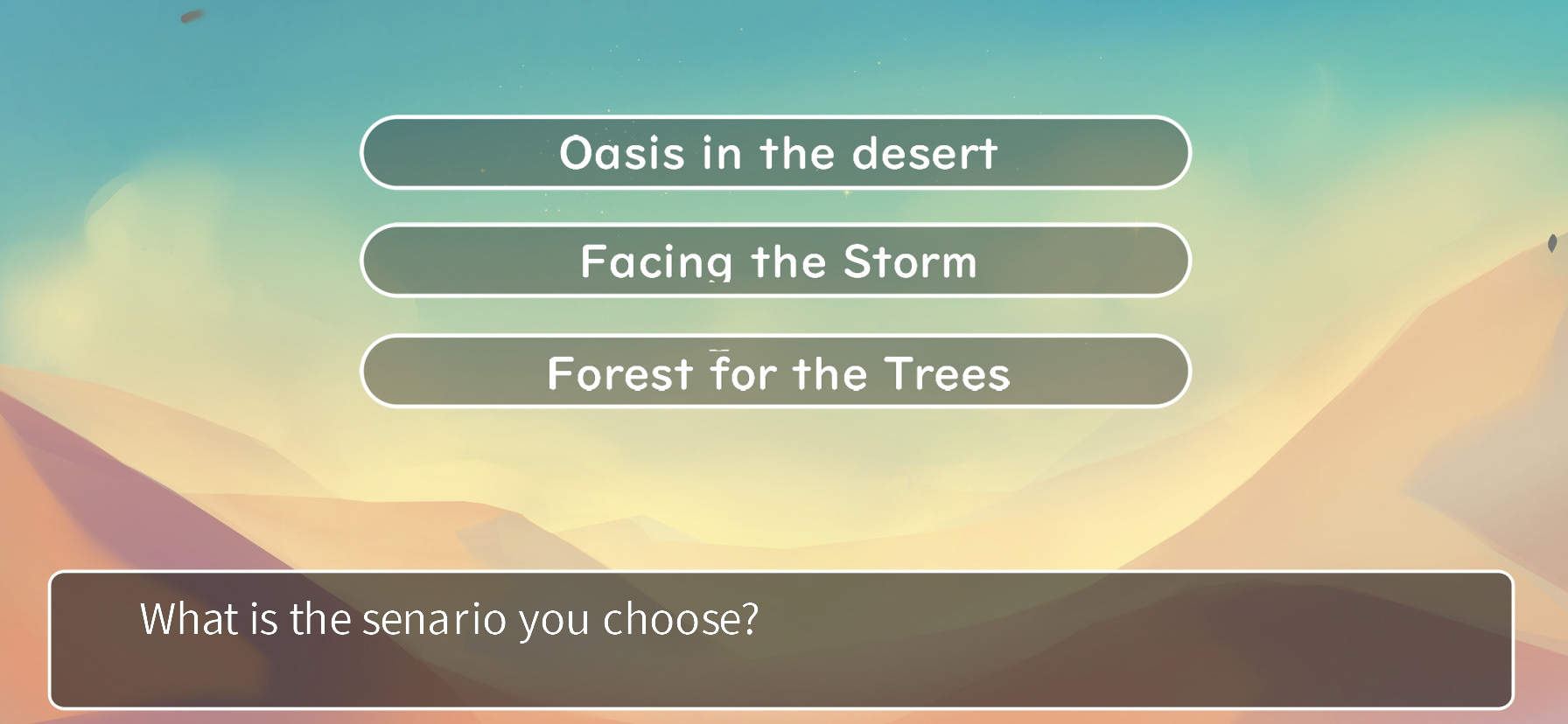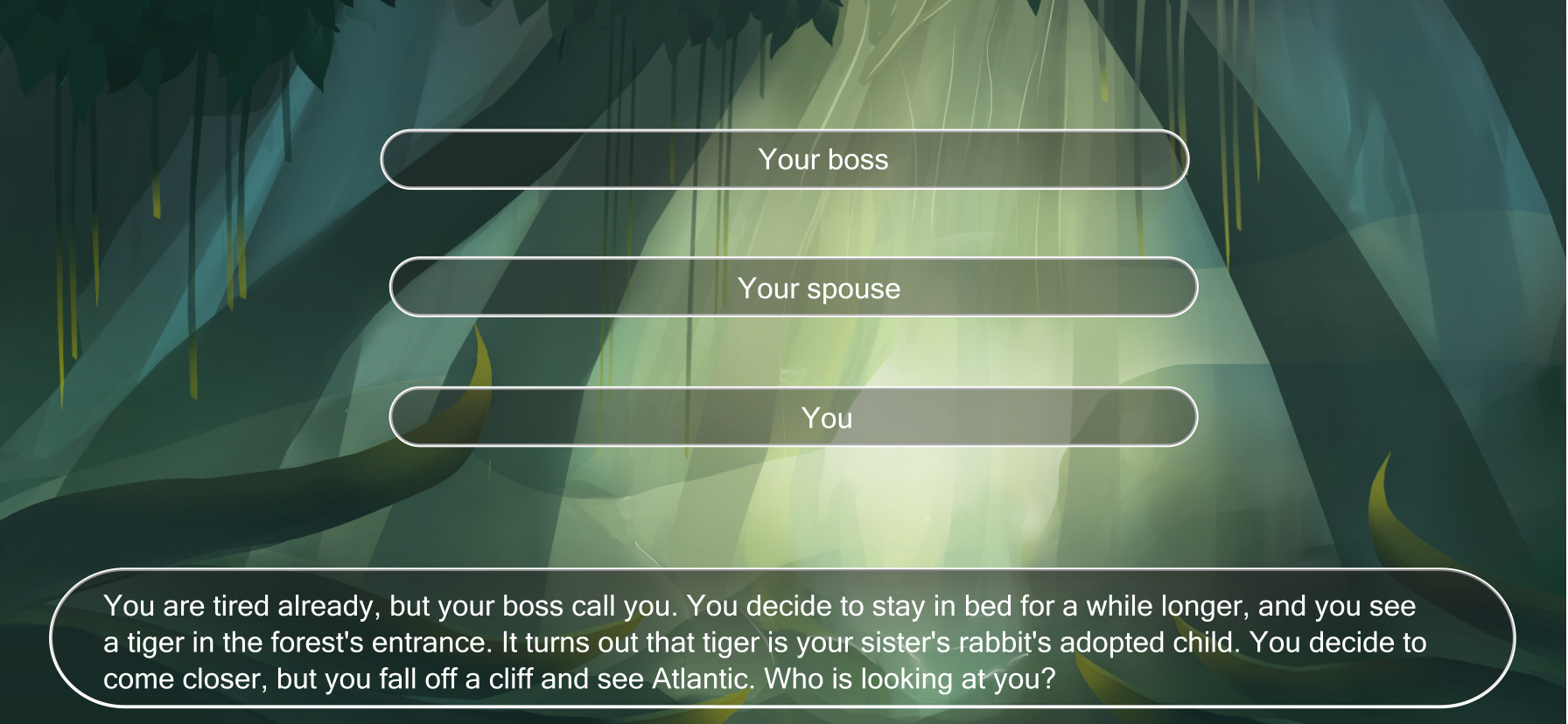Overview
Mentalis, is a web-based video game prototype driven by a three person team to combat depression and uplift mental health outcomes. In just four weeks, fueled by an open use sponsorship from AT&T, we delved into the minds of students, gamers, and streamers to gauge the demand for mental health-oriented games. Guided by the wisdom of Dan Bernard, Director of Content at Heart Support, and the expertise of mentor Chase Jones, Design Director for Microsoft and Epic Mickey, we embarked on a mission to craft an interactive cognitive therapy experience that fearlessly confronts negative thoughts and emotions head-on.
LOGISTICS
TEAM SCHEDULE LENGTH
1 Project Manager July 1st - July 26th 4 Weeks, 3 hrs/day
1 Artist
1 Programmer
Problem
Despite the increasing awareness of mental health issues, many individuals facing depression encounter difficulties expressing their thoughts and emotions in traditional therapy settings. Verbal communication may be challenging for some patients, hindering their ability to effectively convey their inner struggles and hindering therapy progress. Additionally, not all individuals have access to or feel comfortable with traditional therapy methods, limiting their options for seeking help.
Solution
To address these challenges, the concept of "Mentalis" was born—a web-based video game prototype that combines cognitive therapy principles with interactive gameplay. Mentalis offers an innovative solution by providing an accessible and engaging platform for individuals to confront their depression and negative thoughts. By incorporating text-based interactions, the game allows users to explore their emotions and reactions in a comfortable, non-threatening manner. Players are guided through cognitive therapy exercises that encourage them to challenge negative thought patterns and adopt more positive, realistic perspectives.
Process
research
Interview with Swatee Surve, CEO of Litesprite
• A framework to drive improvement
• Are we inadvertently creating a lie from these thoughts and are they gonna start thinking about it?
• As a result, the background won't get lighter and in itself, it’s penalizing
• By this, she was talking about the negative thoughts
• Highly recommends talking to a clinical professional
• Need to be consistent w/ techniques to deal w/ negative thoughts, it’s not clear
• Concerned that not everyone can relate to them and that they may not want to click on the negative thoughts
• Think through the framework and objective
• Are we inadvertently creating a lie from these thoughts and are they gonna start thinking about it?
• As a result, the background won't get lighter and in itself, it’s penalizing
• By this, she was talking about the negative thoughts
• Highly recommends talking to a clinical professional
• Need to be consistent w/ techniques to deal w/ negative thoughts, it’s not clear
• Concerned that not everyone can relate to them and that they may not want to click on the negative thoughts
• Think through the framework and objective
Questions to consider:
• What are the typical and commonly used techniques, and how this fits into a larger narrative and start adding ideas and components afterward?
• What if they don’t feel this way are they penalized?
• What’s the intention behind it?
• What if they don’t feel this way are they penalized?
• What’s the intention behind it?
Design






Main Menu audio
Background music for Anxiety scenario
Review
Chip Sbrogna, Creative Director at Electronic Arts, Feedback:
- Sound: Since we only have 'Facing the Storm' with fully voiced lines, the other scenarios could have sounds like grunts/gasps/sounds for voice lines (like how Nintendo does it for text). It would be easier for localization if we were planning to do that for the future.
- He suggested possibly being able to keep thoughts that the do feel on screen and getting rid of the ones they don't feel (dragging them off screen instead of clicking or having both)
- Since this is assisting the professional, there was a thought that it could be done before the session in replacement of a questionnaire.
-Possible expansion of assisting with treatment online instead of having to physically come in?
- The idea that it could track how long a user may take to get rid of thoughts. Data could be used by the professional.
- Voice commands (in the future if even possible)
- Indicator for what kind of scenarios they are? Not sure entirely how to do that right now.
LAUNCH